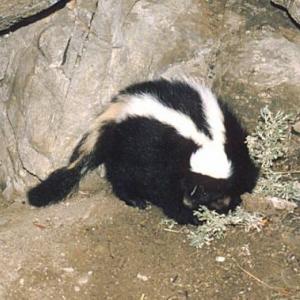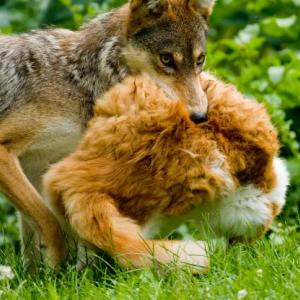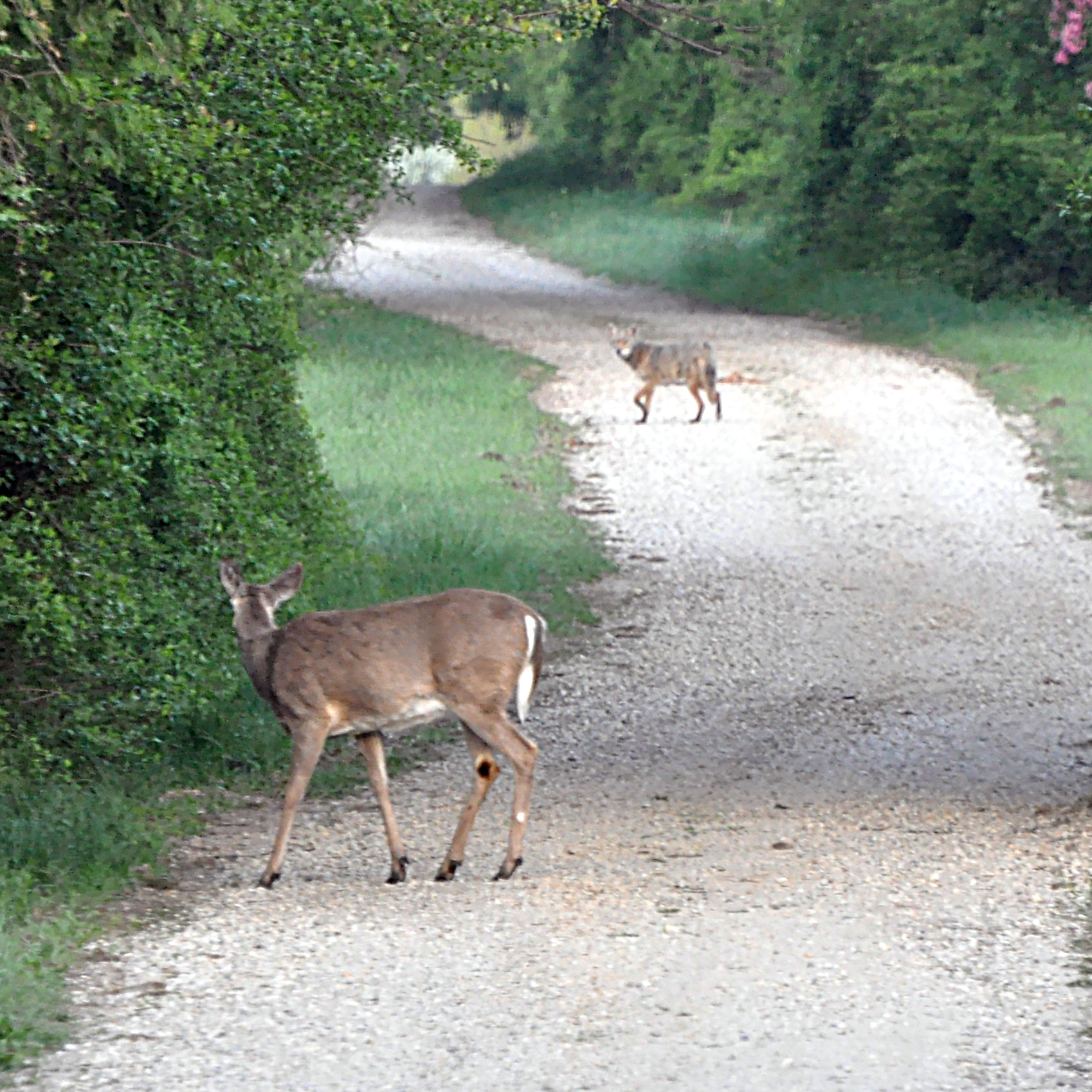
Mesocarnivores
Most of the information the public receives about urban coyotes unfortunately comes from newspapers or other media that usually focus on conflicts, such as pet attacks. Nevertheless, predators, including coyotes, serve important ecological functions, even in metropolitan areas.
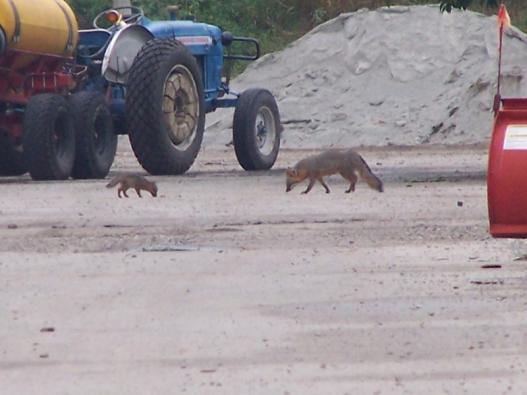
Fox sightings are increasingly rare
There has been a flurry of studies addressing the relationships between coyotes and other medium-sized predators, such as raccoons, skunks, and foxes. In some cases, these relationships are fairly clear, but for others there is only speculation. In rural areas, coyotes often kill red foxes and limit their populations. Less is known about this relationship in large, metropolitan areas. Fox populations were not specifically measured by our researchers during the 1990's in the Chicago area when the coyote population appeared to increase, but we have conducted recent surveys that indicate fox species have declined. This supports the general impressions of most nature center and park personnel in the area.
Some research has suggested that coyotes may limit other medium-sized predators that are smaller than coyotes, including raccoons, striped skunks, and opossums. Although this perception has become quite popular, there has been little evidence that coyotes limit raccoon or skunk populations in urban areas. In fact, these relationships have been explored in some detail and it appears that coyotes have little impact on mesopredator populations outside of foxes and domestic cats, although the possible impact of coyotes on opossums has not been tested.
Below are a few examples of the impact coyotes may have in urban areas, most of which are considered positive effects. This is by no means a thorough list.
Rodents
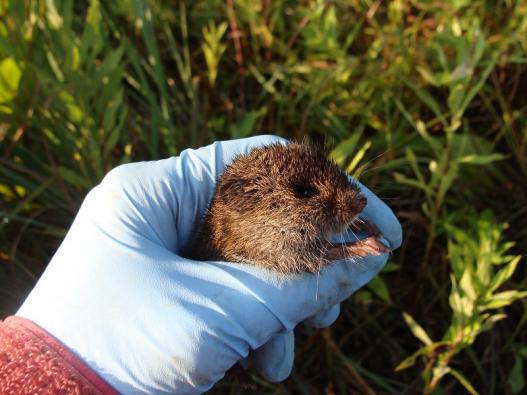
Small mammal surveys (meadow vole pictured) can sometimes explain coyote diet habits
Rodents make up the bulk of the coyote diet in both urban areas and rural areas. Although it has yet to be adequately measured in urban systems, experiments in rural areas have shown that the removal of coyotes results in a dramatic increase in rodent abundance and a decrease in rodent diversity (this means that only a few species increase and exclude other rodent species). Rodent increases have been observed in certain urban areas, such as golf courses, following coyote removal programs. There is also the possibility that coyotes help to control woodchucks. Many areas, including cemeteries and golf courses, have reported declines in woodchuck abundance once coyotes appeared.
White-tailed Deer
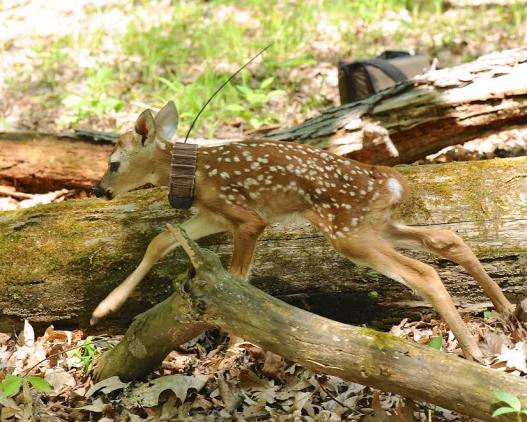
In 2012, we started tracking adult deer and fawns and pairing that with known data from our coyote research.
Deer are often overabundant and difficult to manage in urban areas. Although coyotes rarely take adult deer, they are primary predators of deer fawns. Colleagues from the Illinois Natural History Survey conducted a fawn survival study in multiple locations within the Chicago area and found that coyotes killed 20 percent to 80 percent of the fawns in these various populations. Coyotes cannot effectively reduce deer populations because they do not often take adult deer (in the Midwest), but they may slow population growth in high-density areas through their predation on fawns.
Domestic/Feral Cats
This is perhaps one of the most controversial aspects to the urbanization of coyotes and often pits sections of the public against each other. Coyotes may kill cats for food or to remove them as potential competitors. Those members of the public who own cats or are otherwise interested in their well-being view this function of coyotes as strongly negative.
However, a positive result of coyotes removing peri-domestic or feral cats is the trickle-down effect. Studies in California urban areas showed that coyotes reduced cats in some habitat fragments which then resulted in an increase in nesting success for songbirds. Thus, the coyote serves as a top predator by removing an important smaller predator, the cat, resulting in birds and perhaps other species subsequently increasing in number. More research is needed to determine if these trickle-down effects also occur in other metropolitan areas. Although a separate feral cat study was undertaken in the Chicago suburbs, results are still being analyzed. Initial results suggest that coyotes restrict outdoor domestic and feral cat home ranges to residential areas, thus keeping natural spaces open for more native wildlife.
Canada Geese
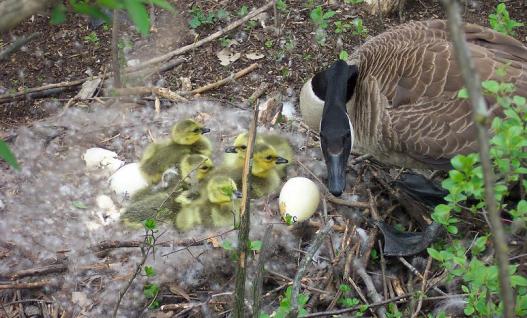
Coyotes are often responsible for taking goose eggs, rather than the geese themselves
Geese have adapted to urban landscapes much like deer and, at times, become overabundant and a nuisance. Geese can also be a challenge to manage in urban areas. A study of geese in the Chicago area found that the population was actually growing much less rapidly than predicted, and that population growth was limited by nest predation. By placing modified video cameras at the nests, this project was able to identify coyotes as the major predator on the nests. Thus, coyotes are serving as a biocontrol for urban geese. Because egg contents are not detected in coyote scat, the extent of coyote predation on goose nests could only be determined by placing cameras at nests. As with deer, coyotes do not take enough adult geese to reduce the population, but they can slow the population increase through egg predation.

